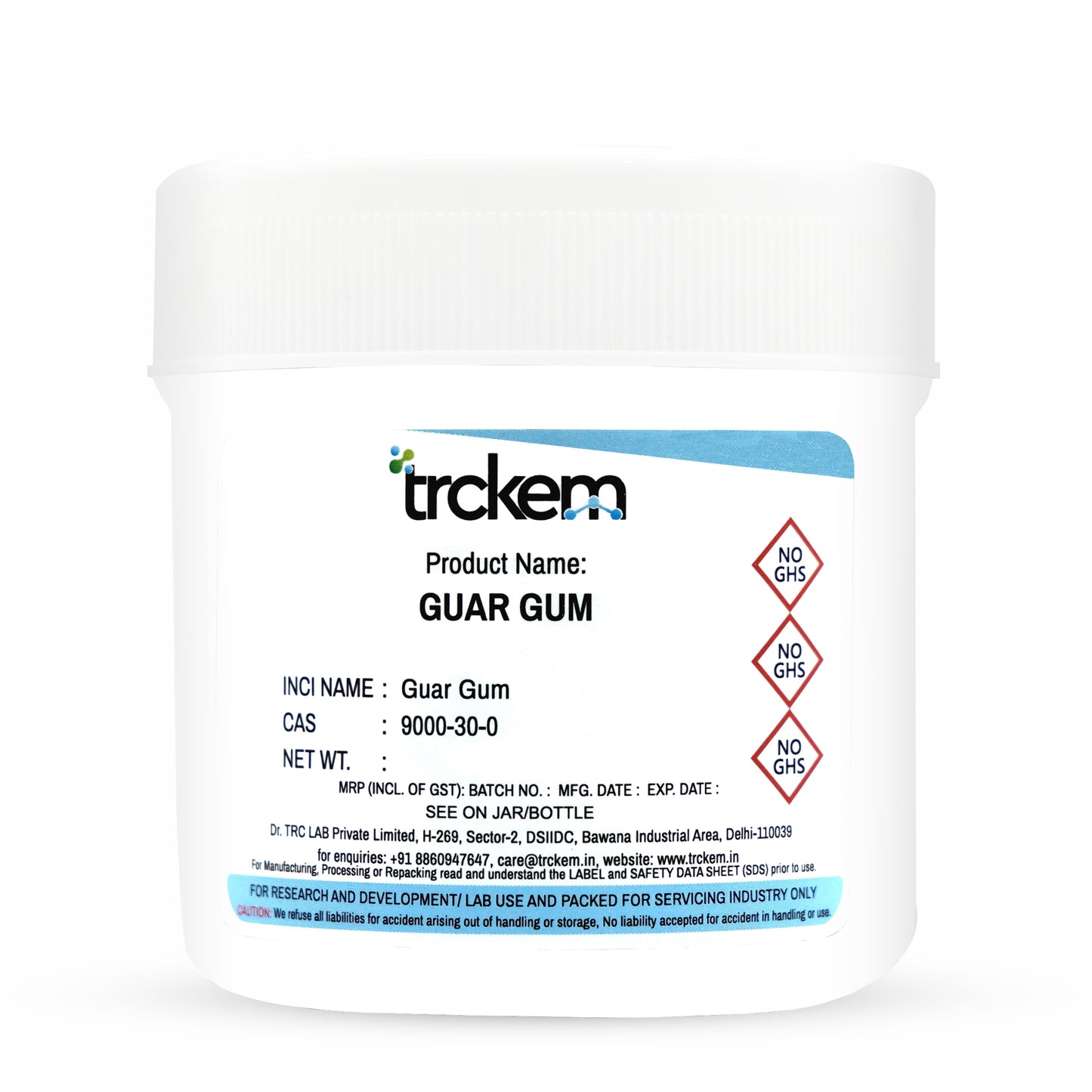




THE STORY OF GUAR GUM

Guar Gum: The Natural Thickener for Smooth, Stable Formulations
Guar Gum is a natural, plant-derived thickening agent extracted from the seeds of the guar plant (Cyamopsis tetragonoloba).
Highly valued for its excellent water-binding, thickening, and stabilizing properties, it is widely used in skincare, haircare, and personal-care formulations to create smooth, uniform textures.

Derived from Guar Seeds & Purified for Cosmetic Excellence
Guar Gum production involves:
• Harvesting guar seeds
• Removing husk & germ
• Milling the endosperm
• Refining into a fine, cosmetic-grade powder
This yields a high-viscosity natural polysaccharide with strong hydration and thickening capabilities.
TRCkem supplies high-purity Guar Gum, ideal for lotions, gels, and natural formulations.

Thicken. Stabilize. Smooth.
Key roles and benefits in cosmetic formulations:
✅ Provides thickening and gel-building in water-based systems
✅ Stabilizes emulsions & suspends particles
✅ Improves spreadability and slip of products
✅ Enhances moisture retention due to its natural humectant nature
✅ Excellent for natural and clean-beauty formulations
Used in: creams, lotions, gels, shampoos, conditioners, hand washes, and herbal preparations.

Natural, Safe & Easy to Use for Stable Formulations
• Typical use level: 0.1–1% depending on viscosity needs
• Hydrate in room-temperature water with moderate mixing
• Works best when pre-dispersed to avoid clumping
• Compatible with surfactants, oils & botanical extracts
• Biodegradable, vegan & naturally derived
• Store in cool, dry conditions away from humidity
• Safe and non-irritating for skin & hair applications
Formulator’s Queries, We Answered
1. What is Guar Gum?
Guar Gum is a natural polysaccharide derived from the seeds of the guar plant (Cyamopsis tetragonoloba). It is widely used in personal care and cosmetic formulations as a thickening, stabilizing, and conditioning agent.
2. What is the INCI Name of Guar Gum?
The INCI (International Nomenclature of Cosmetic Ingredients) name for Guar Gum is Guar Gum.
3. What is the CAS Number of Guar Gum?
The CAS (Chemical Abstracts Service) number for Guar Gum is 9000-30-0.
4. What are the key benefits of using Guar Gum in personal care products?
Thickening Agent – Improves viscosity and texture in formulations.
Emulsifier & Stabilizer – Helps maintain consistency in emulsions.
Conditioning Properties – Provides a smooth feel in hair and skin care products.
Natural & Biodegradable – Eco-friendly and derived from plants.
Enhances Product Spreadability – Improves application and absorption.
5. In which personal care products is Guar Gum commonly used?
Guar Gum is a versatile ingredient used in:
Shampoos & Conditioners (for better texture and detangling)
Body Washes & Shower Gels (to improve viscosity)
Lotions & Creams (for enhanced stability and smoothness)
Face Masks & Serums (as a natural thickener)
Toothpastes (to prevent separation of ingredients)
6. Is Guar Gum safe for cosmetic use?
Yes, Guar Gum is non-toxic, non-irritating, and hypoallergenic, making it safe for skin and hair care formulations. It is widely used in natural and organic cosmetics.
7. Is Guar Gum suitable for sensitive skin?
Yes, Guar Gum is gentle and well-tolerated, making it suitable for sensitive skin types. It helps retain moisture without causing irritation.
8. Is Guar Gum eco-friendly and sustainable?
Yes, Guar Gum is a biodegradable and renewable ingredient derived from plant sources, making it an eco-friendly choice in personal care formulations.
9. Where can I purchase Guar Gum for personal care formulations?
Guar Gum is available from specialty chemical suppliers, cosmetic ingredient distributors, and bulk manufacturers catering to the personal care industry.
10. What is the recommended usage level of Guar Gum in formulations?
The typical usage level of Guar Gum ranges from 0.2% to 2%, depending on the desired viscosity and formulation type.







